 What a coup for long-time environment and democracy activist, Julianne Bell! Last night in Melbourne at the AGM of the Royal Park Protection Group, federal ALP Member for Wills, Hon Kelvin Thomson announced and detailed his 14 point plan for population reform, which is reproduced at the end of this article.
What a coup for long-time environment and democracy activist, Julianne Bell! Last night in Melbourne at the AGM of the Royal Park Protection Group, federal ALP Member for Wills, Hon Kelvin Thomson announced and detailed his 14 point plan for population reform, which is reproduced at the end of this article.
The plan was well received by an audience composed of the Royal Park Protection Group [RPPG] members of members of other Victorian community groups.
Questions from the audience indicated a high degree of engagement with the topic both on the local and global level.
Lifelong concern for Australia's native animals
After delivering his plan , Kelvin Thomson spoke of his lifelong interest in Australia's unique native fauna, and his concern that it can very easily be extinguished mainly through through loss of habitat and that our compassion should extend to living creatures other than humans. He said that many small species will disappear and not even be noticed by most people however be a loss to bio-diversity all the same.
Thomson also referred to the more iconic example of the koala whose perilous survival has been most recently in the news. He pointed out that there are only as many koalas remaining in the wild as there are additional humans in Australia every few weeks!
Kelvin Thomson expressed his concern that Australians need to leave our continent in as good condition as it was when we found it.
A motion at the end of the meeting was passed unanimously and in support of Kelvin's position which also called for a population summit.
Royal Park Protection Group an appropriate host
It was very appropriate that RPPG host this ground-breaking speech because RPPG was formed to defend 20 ha of Royal Park, in the heart of Melbourne, from being sold off by the Bracks government to Australand (Singapore majority owned) developers for a housing estate which was advertised worldwide to prospective immigrants. After this extraordinary gift of the peoples' land, the Bracks government even gave Australand $80m of tax payers money, purportedly in exchange for 10 days use of the land for the Commonwealth Games. Unable to win against the might of corporations and government, and with little help from Victorian unions, RPPG members went on to form Protectors of Public Land (Vic) and have now led Victorians in organising against the destruction of democracy and public land for commercial interests profiting from politically engineered population growth.
Where to from here? Population Reform - Political Challenges!
Kelvin Thomson will be the guest speaker at a Public meeting run by
Sustainable Population Australia (Victorian branch)
on Sunday November 29th at 3.00pm.
Topic: Population reform- Political challenges
At: Meeting Room 1 North Melbourne Library 66 Errol St. North Melbourne.
All welcome.
Enquiries to jillq[AT]optusnet.com.au
THERE IS AN ALTERNATIVE TO RUNAWAY POPULATION
- KELVIN THOMSON’S 14 POINT PLAN FOR POPULATION REFORM
Tonight I am releasing for discussion a 14 point plan for population reform.
The first 11 points go to how we can stabilise Australia’s population.
1. Stabilise Australia’s population at 26 million by cutting the net overseas migration program to 70,000 per annum.
2. Cut the skilled migration program to 25,000 per annum.
3. Hold the family reunion program at 50,000 per annum.
4. Increase the refugee program from 13,750 to 20,000 per annum.
5. Alter the refugee criteria to include provision for genuine climate refugees.
6. The revised number of annual permanent arrivals from these programs would be 95,000 - 50,000 family reunion plus 25,000 skilled plus 20,000 refugees. Two more factors need to be considered: the number of people departing permanently from Australia, and the number of people arriving permanently from New Zealand. To reach a net overseas annual migration target of 70,000, the number of automatic places available for New Zealanders needs to be restricted to the number of departures from Australia over and above 25,000. The Trans Tasman Travel Arrangement would be renegotiated to achieve this, splitting available places for New Zealanders equally between skilled migrants and family reunion, and allowing New Zealanders to also apply and compete with other applicants under these normal migration programs.
7. Reduce temporary migration to Australia by restricting sub-class 457 temporary entry visas to medical and health related and professional engineering occupations.
8. Require overseas students to return to their country of origin and complete a two-year cooling off period before being eligible to apply for permanent residence.
9. Abolish the Baby Bonus.
10. Restrict Large Family Supplement and Family Tax Benefit A for third and subsequent children to those presently receiving them.
11. Dedicate the savings from abolishing the Baby Bonus and reduced expenditure on Family Payments for third and subsequent children towards increased investment in domestic skills and training through Universities and TAFEs.
The final three points go to how we can play a role in helping stabilise global population.
12. Increase Australia’s aid to meet the United Nations target of 0.7% of Gross National Income with money saved by abolishing Fringe Benefits Tax concessions for company cars, and greater use of off-the-shelf purchases in defence equipment purchases.
13. Use more of Australia’s aid budget for educating girls and women, and for better access to family planning and maternal child health, and advocate in the United Nations and international fora for other countries to do likewise.
14. Put overpopulation on the Agenda for the Copenhagen Climate Change talks.
How have I arrived at this plan?
STABILISE THE WORLD’S POPULATION
I have set out the reasons why I believe the world’s projected population levels are too high and unsustainable – global warming, food crisis, water shortages, housing affordability, overcrowded cities, transport congestion, fisheries collapse, species extinctions, increasing prices, waste, war and terrorism – in detail in a speech to Parliament on 17 August. [Candobetter.net Editor: This link is broken, but the contents are reproduced below. The broken link was http://www.kelvinthomson.com.au/speeches.php.]
If we are going to achieve this outcome, everyone has a role to play. Every country has both the right and the duty to stabilise its own population at a level compatible with its own resources and environment. In equity terms, this is an easier issue to deal with than carbon emissions, where the poorer countries have a legitimate anger that the wealthy countries have had all the fun; wrecked the neighbourhood, and the police have been called in to shut the party down just as poorer countries were starting to arrive.
The equitable approach is for each country to pull its own weight and stabilise its own numbers. Countries should not be asked to do more, or less, than this.
The two most promising ways of achieving population stability around the world are educating girls and women, and the provision of better health services, particularly reproductive health services. These two measures lower the fertility rate. According to the World Vision chief executive Tim Costello, for every extra year a girl stays in school, her fertility decreases. “She has fewer children and more optimism and power”, says Tim Costello. Professor Roger Short says that removing the barriers that separate women from the knowledge and technologies they need to manage the size of their family will cause family size to fall, even in poor, illiterate communities. He says conversely, as a result of lost attention to family planning since the 1990s, the population projection for several countries in 2050 has been raised, e.g. Kenya, up from 54 million to 83 million.
There are four things Australia can do to promote this international responsibility. First, in international fora such as the United Nations,
we should promote population stabilisation, better education for girls and women, and improved health services.
Second, we should increase our overseas aid program to meet the United Nations target of 0.7% of Gross National Income. This would involve an increase of $350 million in 2010-11 and a bit over $1 billion in 2011-12. The Government is committed to returning the Budget to surplus, so clearly such an increase would involve finding savings from elsewhere in the Budget – the money has to come from somewhere. One option which has merit in my view is scrapping the $1.5 billion fringe benefit tax concession for company cars, a subsidy from taxpayers which has been criticized by the Australian Conservation Foundation and other groups as damaging to the environment. Another is to trim fat from the defence budget by buying off-the-shelf military equipment rather than engaging in incredibly expensive modification. For example the Air Warfare Destroyer project cost double the initial estimate of $3.5 to $4.5 billion, to be $7.5 billion. So too did the Amphibious Vessel project, initially estimated at $1.5 to $2 billion, and finishing at $3 billion.
This additional money could be channelled into three critical areas – improving education levels, improving health outcomes and reproductive health services, including contraception, and developing renewable energy-based economies which have a path to prosperity that is not linked to increasing greenhouse emissions.
Third, we should put the issue of population stabilisation on the Agenda for the Copenhagen Climate Change talks. Al Gore has listed population increase as one of the three key drivers of climate change, and he is right. It is hard to see how any serious carbon reduction targets can be met while the world’s population continues to escalate. Until we address the issue of population, we are fighting global warming with at least one arm tied behind our back. Whilst it is unreasonable to ask developing countries to remain impoverished, it is not unreasonable to ask them to adopt a goal of population stabilisation.
Fourth, we can lead by example, and stabilise our own population.
STABILISE AUSTRALIA’S POPULATION
The reasons why I believe Australia’s population needs to be stabilised are also set out in detail in my speech to Parliament on 17 August, which can be accessed at [candobetter.net editor: Link no longer functional, due to Kelvin's retirement"http://www.kelvinthomson.com.au/speeches.php">http://www.kelvinthomson.com.au/speeches.php.]
Population is a function of birth rates, death rates, and migration rates. I am in favour of everyone living as long as possible. That leaves the migration rate and the birth/fertility rate.
Australian population increase over time is set out in the following graph:
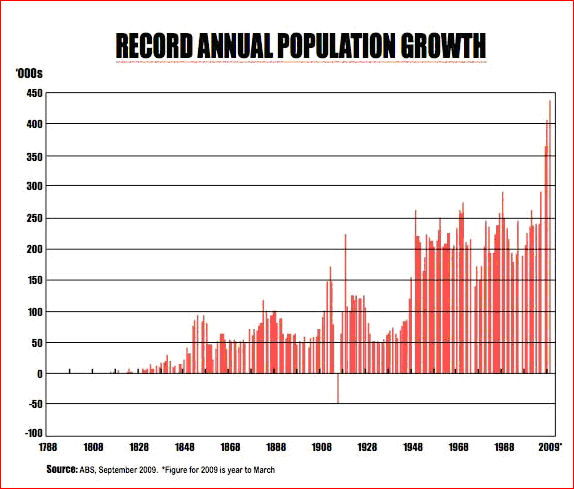
MIGRATION RATE
Population policy cannot be a long-term side effect of ad-hoc immigration practice (Barry Jones Report, 1994). Immigration policy should be based on population policy.
Australia’s population has been skyrocketing in recent years, and the principal reason for this is the dramatic increase in our migration rate. This increase is due to the record high levels of Australia’s permanent entry program in recent years and to a surplus of long-term temporary arrivals, notably students and workers, over departures.
The increased migration rate has made all the previous projections about our population quite inaccurate understatements. Australia is now officially projected to have 35 million people by 2049. Just 2 years ago the Intergenerational Report predicted we would have 28 million.
Previous predictions and projections about Australia’s population have been gross underestimates. Back in 1984 the World Bank’s population projection for the year 2100 was 21 million. We reached that in 2007! A decade ago, forecasters were predicting we would not hit the 22 million mark until 2040. We’re there already!
The idea that the population is going to take care of itself is just wrong. Not only does it never happen, population is now a runaway train.
To bring the train back under control we need to return to a net overseas migration number more in keeping with previous practice. Net overseas migration in 2007-08 was 213,461. I believe this should be reduced to 70,000. If we cut net overseas migration to 70,000, and the fertility rate was maintained at 1.8, according to Professor Bob Birrell, of Monash University’s Centre for Urban and Social Research, the population would reach 26 million by the year 2050 and stabilize at about this level for the rest of the century.
The age profile of the population would also remain relatively constant.
A net overseas migration figure of 70,000 is not unachievable or without precedent. There were several years in the 1980s when the net overseas migration figure was in the 70,000s, or less. There were three years in the 1990s when the net overseas migration figure was less than 70,000. As recently as 1998 the net overseas migration figure was less than 80,000. In 1994 the Australian Academy of Science advised the Federal Government that it would be prudent to keep net migration below 50,000.
A net overseas migration rate of 70,000 is not inconsistent with Australia’s obligation to be a compassionate international citizen, nor is it inconsistent with a humanitarian approach to allowing family reunion for present Australian citizens. The present number of refugees and asylum seekers taken by Australia is 13,750. It has been at the 12,000 – 13,000 level for many years. It could be increased to 20,000, an increase of over 45%, within the context of a large cut to the overall migration program.
If we increase the refugee program we would also be better prepared for the possibility of climate refugees. There is a distinct prospect that in future low lying islands in the Pacific will be rendered uninhabitable by sea level rise and storm surges. I think our refugee criteria should be altered to enable us to accept people from the Pacific Islands provided they can demonstrate that their former homes are genuinely uninhabitable as a consequence of climate change, and provided that Australia is not being used as an overflow by countries which have failed to address their own population capacity and allowed themselves to become overpopulated.
Nor is a generous family reunion program inconsistent with population stabilisation. The family reunion program stood at 49,870 in 2007-08 and 56,366 in 2008-09. A figure of 50,000 could be retained.
What is incompatible with population reform is our skilled migration program. In 1995-96 it was 24,100. It had risen to 114,777 by 2008-09 – four to five times what it used to be. It should be cut back to 25,000.
To those who object that we need these workers, I ask, why is it that the catch cry for just about every Government project, and every private sector project, is that it will provide jobs for our workforce. If we are already short of workers, why do we need to find them these jobs? Why is it that 100,000 young Australians aged between 15-24 dropped out of the labour force last year?
Ambit claims about the need for a vastly increased workforce or an imminent lack of labour, also underpin much of the ageing population scare (See Overloading Australia, pp 98 ff).
And workforce participation by older Australians is rising, not falling, and could rise further. For 2008-09 average participation in the workforce was 81 per cent for 50-54 year olds, 69 per cent for 55-59 year olds and 49 per cent for 60-64 year olds. These participation rates have gone up during the last decade. Further improvement is possible. Why have our Disability Support Pension numbers risen? Its annual growth rate in the last 10 years has been 3.16 per cent, and it continues to rise despite Government efforts to reduce it. Skilled migration also undermines the need for a concerted effort to lift aboriginal employment.
Employers who claim they will need a huge labour force in the future usually mean that they would like a large pool of job seekers to select from, to suppress wages. In reality no managing director will employ more staff than necessary. Automation and robotisation are often preferred.
To those who say, these workers are needed for the skills they bring to Australia, I disagree. Only a minority of Non-English Speaking Background migrants use professional qualifications in the work they find once admitted to Australia. This applies to former overseas students and those with qualifications from overseas. And bringing in 3485 cooks and 1082 hairdressers under skilled program visas in 2007-08 is an indictment of our own education and training system. The present arrangement is suppressing market signals that would improve our education and training system. We have become addicted to skilled migration. It is time we broke the habit.
Our Universities and TAFES have had their funding slashed and have been told to make ends meet by bringing in overseas students. It would be better if young Australians who are presently missing out on a place at a University or TAFE were given a place. 18,500 eligible applicants missed out on a university place this year, up from 12,600 last year. Professor Bob Birrell says that the real number of students missing out may be much larger. He says eligible applications amount to 227,000, compared with actual acceptances of 161,000- a difference of more than 66,000. The proportion of resident young people enrolled in higher education is relatively low by European standards. This reflects the period since 1996 when there has been very little increase in the number of domestic subsidized places. There should be a large increase in domestic enrolments in higher education so we can match the demands of the job market, where at least half of net job growth requires degree credentials. This requires an increase in funding, and the money has to come from somewhere.
This is where the birth rate issue comes in.
FERTILITY RATE
Australia’s fertility rate has moved between 2004 and 2007 from 1.76 to 1.93 children per women. This does not mean that births are less than deaths. Births per year in Australia are twice deaths, and have been so for many years.
In 2004 the Howard Government introduced the ‘baby bonus’ to encourage women to have more children. This payment is contradictory to the objective of stabilising Australia’s population. Furthermore if it has any effect, it encourages women to have children for the wrong reasons. Children should be loved and wanted, not seen as a potential source of income. If it has no effect, it is a waste of taxpayers’ money which could be better used elsewhere. Its present cost to the revenue is $1.4 billion in 2009-10.
Recently the total fertility rate has been increasing. According to the Australian Bureau of Statistics (ABS), the Australian total fertility rate was 1.93 babies per woman (2007), up from 1.81 in 2006 and the highest since 1981.
I have no problem with ongoing Family Payments for the first and second child, but payments for third and subsequent children fly in the face of efforts to achieve population stabilisation.
The Large Family Supplement is paid for the third and each subsequent child at a little over $280 per annum. Its cost to revenue in 2009-10 is estimated at $208 million. It should be phased out – while it would be unfair to remove this payment from those presently receiving it, it should be grandfathered, and third and subsequent children born from now on would not be eligible for it.
The Family Payments Budget for 2009-10 is $17.4 billion. It is one of the Federal Government’s largest and most complex expenditure programs.
The STINMOD micro simulation model produced by the National Centre for Social and Economic Modelling (NATSEM) indicates that around 375,000 children are third or subsequent children.
Assuming that the distribution of rates of payment for these children is similar to that for Family Tax Benefit A recipients generally, it can be assumed that about 33% would be on the maximum rate, about 30% on less than maximum rate but more than base rate, about 30% on base rate, and about 7% on less than base rate.
Using 2009 rates for 0-12 year olds adjusted up a little to take account of higher rates for 13 – 15 years, the cost is estimated to be approximately $1.3 billion in 2009-10.
As with Large Family Supplement, I would propose that Family Tax Benefit A for third and subsequent children be restricted to those presently receiving it.
The combined savings from cutting out the Baby Bonus, Large Family Supplement, and Family Tax Benefit A for third and subsequent children would be approximately $1.4 billion plus $200 million plus $1.3 billion, ie nearly $3 billion.
While this saving would not all become available immediately, it is very significant and could greatly boost the levels of university and vocational education in Australia. It could be used to boost the number of places being offered by Universities so that eligible students do not miss out on a place, it could be used to boost funding for TAFE, and used to boost funding for apprenticeships.
The Bradley Review of Australian Higher Education said we could achieve a demand driven entitlement system for domestic higher education students, where public funding will be provided for each undergraduate student eligible for a university place, at a cost of $1,130 million over 4 years. The Budget Papers have allowed $491 million from 2009-10 to 2012-13 towards this objective. Finding the extra $639 million and funding the extra places would be money well spent.
In relation to the TAFE sector the Australian Education Union has called for increased funding to meet projected needs in vocational education and training of $1,125 million. Key areas for spending include:
• Projected growth in enrolments, the economy’s anticipated need for higher level qualifications, investment in retraining the workforce and strategies to engage those in society who are under or un-employed.
• Workforce transition and renewal and professional development.
• Building and technology improvements.
• Student services and support programs.
I would also like to put money into reducing HECS debts, which I think are too high, and into increasing payments to apprentices and Youth Allowance, which I think are too low. I acknowledge, however, that these are expensive items, so improvements in these areas would be subject to getting in the full $3 billion in family payments savings, and therefore would be some time off. I think it needs to be, regrettably, a second order priority to creating the extra places for young people, and some not so young people, who are presently neither studying or working.
TEMPORARY VISAS
Temporary entry permits have skyrocketed in Australia. In 1995-96 they were 3.1 million. By 2007-08 they had reached 4.2 million.
This number is made up of:
• 110,570 subclass 457 visas;
• 278,180 student visas;
• 3,808,610 other visa classes.
There are no caps on student visas, 457 visas, or Working Holiday visas. Nor are there caps on numbers taking up bridging visas or 485 visas after completing courses here.
It is said that this doesn’t matter because the temporary residents all return to their country of origin. This is not true. At least half of former overseas students are staying on either by gaining permanent residence visas or temporary bridging or 485 visas. Maybe around a third of 457 visa holders gain permanent residence, mainly via Employment Nomination visas. Furthermore, while they are here, they add to Australia’s population pressures.
In 2008, on average nearly one million temporary residents, including tourists, were here at any one time.
Temporary entry work visas are a tool for undermining the wages and conditions of Australian workers, and a recipe for exploiting overseas ones.
The Construction Forestry Mining and Energy Union has uncovered dreadful examples of the use of sham contractors who are underpaid or not paid at all, and threatened with deportation if they complain or seek to enforce their rights. Subclass 457 work visas have no worthwhile role to play, except in very limited situations. They should be restricted to areas of clear need, that is to say the medical and health related and professional engineering occupations. If we really are short of workers, how come political and business leaders are forever promoting proposals with the catchcry, “jobs, jobs, jobs?”
Overseas students should be required to return to their country of origin once they have completed their course. They should be subject to a 2 year cooling off period before being eligible to apply for permanent residence in Australia. Since the Howard Government changed the rules in 2001 to allow students to apply for permanent residence, onshore, overseas student numbers have skyrocketed from 204,000 to over 467,000 in just seven years. Rorts and scams have crept into the program and damaged Australia’s international education reputation. Decoupling the link with permanent residence will put the focus back on education where it belongs, restore Australia’s international education reputation, and probably also reduce temporary entry numbers.
NEW ZEALAND
At present we also have uncapped migration from New Zealand. The number of New Zealand citizens stating that they are settling permanently in Australia has increased from 16,364 in 2002-03 to 34,491 in 2007-08 and 47,780 in 2008-09. About 7,000 of the 34,491 were third country migrants who have migrated to New Zealand, then got citizenship, then come to Australia. This open-ended, uncapped program makes it impossible for Australia or New Zealand to implement a population policy and it needs to be reformed.
The Trans Tasman Travel Arrangement with New Zealand would need to be re-negotiated to do away with the open door. The present arrangement has no formal legal status. In any event, we need to stabilise population globally. Hence getting other countries such as New Zealand to address their population capacity, rather than simply acting as an overflow for surplus population, is important.
What we should do is monitor annual departures, and renegotiate the Trans Tasman Travel Arrangement with New Zealand to close off automatic entry for New Zealanders, while allowing the places made available by annual departures from Australia above 25,000 to be filled by New Zealanders, splitting available places equally between skilled migrants and family reunion. Otherwise New Zealanders would be eligible to come to Australia under the normal programs, applying and being assessed in the same way as everyone else.
This would give Australia control over our net migration number which we presently don’t have. We can set a target for permanent skilled migrants, family reunion, and refugees, but we have no idea how many people are going to come in from New Zealand, and no idea how many people are going to leave Australia. These numbers are too important to be left to chance, and we should set a net target figure. The approach I have adopted is based on a net overseas migration target figure of 70,000: 95,000 in from skilled, family reunion and refugee categories, expecting at least 25,000 to leave, and allowing New Zealanders to fill the places made available through this process. The number of departures in recent years has been far higher than 25,000, and even when permanent arrivals numbered around 90,000 it was still well above 25,000.
CONCLUSION
In combination these measures would do great things for Australia. First and foremost they would stop us wrecking our environment. Second they would get us to focus on higher education and training for young Australians. They would open up job opportunities for younger and older workers who are presently missing out. They would help us meet carbon reduction targets. They would make housing more affordable. They would put a halt to the creeping inflation and price rises for food, water, and energy. They would address the declining quality of life in our cities, the traffic congestion and the disappearing backyards and open spaces. They would enable us to be compassionate, decent international citizens, taking more refugees and lifting our overseas aid. Above all else they would discharge our obligation to pass on to our children and grandchildren a world, and an Australian way of life, in as good a condition as the one our parents and grandparents gave us.
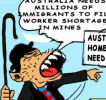 The Centre for Population and Urban Research (CPUR) has recently released a major new report on immigration and on Australia's alleged need for labour. It shows that there is no real problem with supplying labour for the Resources Boom -- even if you accept the government's assumption that we need to export our resources as fast as possible.
The Centre for Population and Urban Research (CPUR) has recently released a major new report on immigration and on Australia's alleged need for labour. It shows that there is no real problem with supplying labour for the Resources Boom -- even if you accept the government's assumption that we need to export our resources as fast as possible.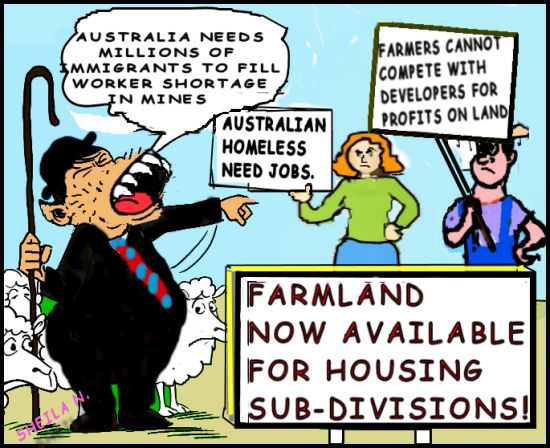

 An unusual thing about Dick Smith's book, "Population Crisis," is that it is written by a wealthy man who points out the failings of rich people. He says that most rich people give nothing away and describes them as very selfish. "Our economic system comes equipped with only one forward gear: foot to the floor growth. The poor want to be rich, and the rich want to be richer. It's an endless treadmill, and none of our leaders appears to know how to get off." Also inside article: Win $1m if you are under 30 by solving the population puzzle.
An unusual thing about Dick Smith's book, "Population Crisis," is that it is written by a wealthy man who points out the failings of rich people. He says that most rich people give nothing away and describes them as very selfish. "Our economic system comes equipped with only one forward gear: foot to the floor growth. The poor want to be rich, and the rich want to be richer. It's an endless treadmill, and none of our leaders appears to know how to get off." Also inside article: Win $1m if you are under 30 by solving the population puzzle.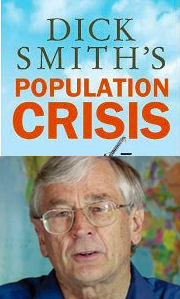
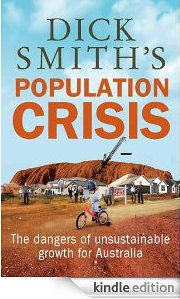




 This article explores why Australians are so frustrated with the lack of deep thinkers and serious policy makers in our political establishment. It asks why politicians only discuss peripheral issues and never seriously address homelessness. It comments on some recent flagrantly anti-democratic political acts, including the way LNP leadership has been hired out to Cambell Newman in Queensland. In the spirit of relocalisation, it offers some insights into local power in China.
This article explores why Australians are so frustrated with the lack of deep thinkers and serious policy makers in our political establishment. It asks why politicians only discuss peripheral issues and never seriously address homelessness. It comments on some recent flagrantly anti-democratic political acts, including the way LNP leadership has been hired out to Cambell Newman in Queensland. In the spirit of relocalisation, it offers some insights into local power in China. One only need browse through recent events in Australian politics (Federal and State) over the last few months to understand why Australians are so frustrated with the lack of deep thinkers and serious policy makers in our political establishment.
One only need browse through recent events in Australian politics (Federal and State) over the last few months to understand why Australians are so frustrated with the lack of deep thinkers and serious policy makers in our political establishment. You hear people like Rob Adams and Marcus Spiller saying there is nothing you can do about population growth in Victoria and Australia. Wrong. For a start the government should cancel the
You hear people like Rob Adams and Marcus Spiller saying there is nothing you can do about population growth in Victoria and Australia. Wrong. For a start the government should cancel the 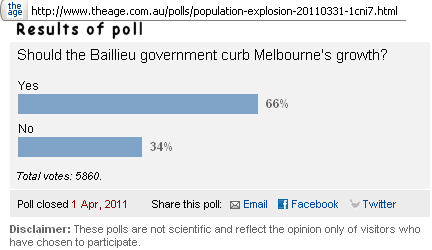 Results of Melbourne population poll, added to this article on 16 April 2011.
Results of Melbourne population poll, added to this article on 16 April 2011.



 Editor's note: The full original title by Wei Ling Chua of
Editor's note: The full original title by Wei Ling Chua of  Authorities are bracing in northern Australia for an influx of protesters representing Gouldian finch societies and breeders throughout the globe. Police fear a repeat of last years bloodbath when Mitchell hopping mouse advocates protested against further degradation of the marsupials habitat in South Australia.
Authorities are bracing in northern Australia for an influx of protesters representing Gouldian finch societies and breeders throughout the globe. Police fear a repeat of last years bloodbath when Mitchell hopping mouse advocates protested against further degradation of the marsupials habitat in South Australia.  Five weeks passed and no reply. The officer was at the DECCW lecture I described above so I said hello and he apologised for not answering, explaining that he passed my email around to other officers for comment. Apparently they nixed the idea of rope overpasses for koalas claiming they didn't work. I pointed out that they do work for possums and other animals however. His comment "Ah but possums aren't a threatened species."
Five weeks passed and no reply. The officer was at the DECCW lecture I described above so I said hello and he apologised for not answering, explaining that he passed my email around to other officers for comment. Apparently they nixed the idea of rope overpasses for koalas claiming they didn't work. I pointed out that they do work for possums and other animals however. His comment "Ah but possums aren't a threatened species."


.jpg)
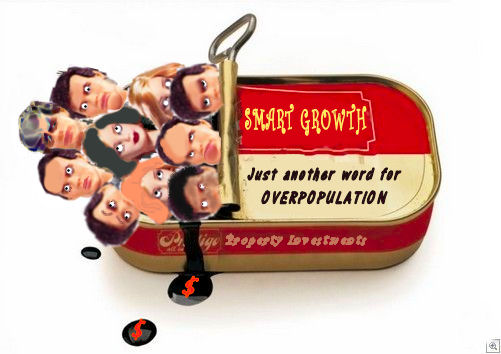
 On ABC TV Jan 28th 7.30 report the Australian PM appears to have backtracked on the idea of a "Big Australia" for which he said previously that he would make "no apology"
On ABC TV Jan 28th 7.30 report the Australian PM appears to have backtracked on the idea of a "Big Australia" for which he said previously that he would make "no apology" 

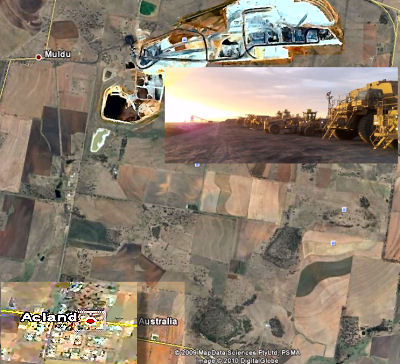

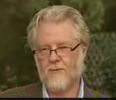

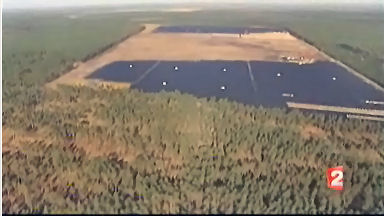
 Workers add 4,500 daily.
Workers add 4,500 daily. 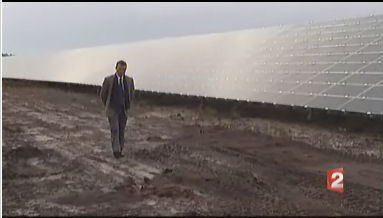 The photovoltaic-center is huge, on a non-human scale.
The photovoltaic-center is huge, on a non-human scale. 
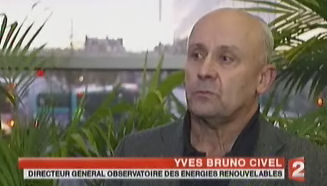


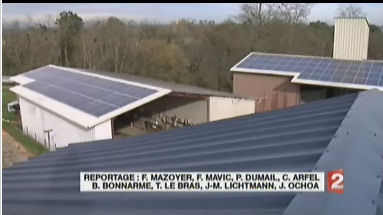
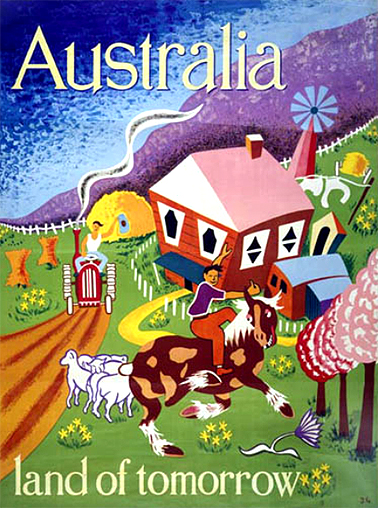


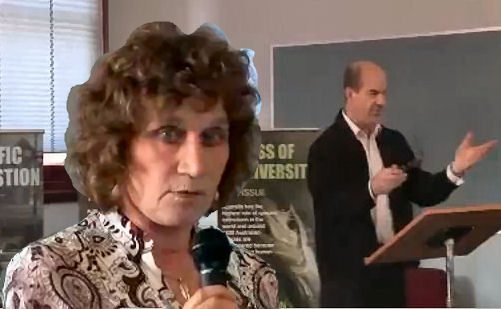
 What a coup for long-time environment and democracy activist, Julianne Bell! Last night in Melbourne at the AGM of the Royal Park Protection Group, federal ALP Member for Wills, Hon Kelvin Thomson announced and detailed his 14 point plan for population reform, which is reproduced at the end of this article.
What a coup for long-time environment and democracy activist, Julianne Bell! Last night in Melbourne at the AGM of the Royal Park Protection Group, federal ALP Member for Wills, Hon Kelvin Thomson announced and detailed his 14 point plan for population reform, which is reproduced at the end of this article.
 Figures from The Magic Puddingby Norman Lindsay
Figures from The Magic Puddingby Norman Lindsay








Recent comments